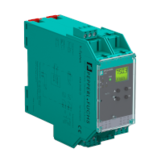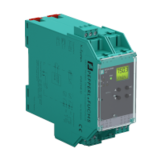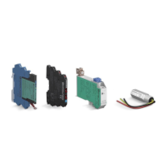風力發電-風力渦輪機的雷電防護
雷電防護
風力是太陽能的一種表現形式。太陽照射引起空氣熱量不均勻,地球外面不規則性,以及地球自轉都會形成風。風的流動會受到地形,水域和植被的影響。於是我們利用風的流動來發電。
風能或風力是指用風力來產生機械動能或電力。風力渦輪機把風的動能轉換為機械動能。而這種機械動能被用於特殊用途(如穀物研磨或水泵)或是由發電機將其轉換成電能。
那麼,風力渦輪機是如何發電的?簡單地說,風力渦輪機的工作原理也風扇正好相反。風扇是將電能轉換為風能,而風力渦輪機是將風能轉化為電能。風吹動葉片軸向旋轉,葉片連接到發電機上,這樣就可以發電了。
風力渦輪機高度通常為60~150米,很容易遭受雷擊和電湧。雷電防護方案均符合IEC 61400-24(VDE 0127 PART 24)標準。
Pepperl+Fuchs的雷電防護產品專門為工業設備(風力發電機)設計,保護其免受雷擊。雷電保護、浪湧保護、信號隔離和安全接地等產品品種齊全。

Frequency converters from Pepperl+Fuchs, in combination with inductive sensors, enable reliable detection of the rotational speed. This ensures that the speed of the generator does not exceed certain limits.

Pepperl+Fuchs signal converters transmit analog signals to the controller via galvanic isolation. In wind turbines, for example, temperature converters record the values from temperature sensors and transmit them safely. This makes it possible to monitor that oils or oil films on the drive shaft of the generator do not become too hot.

Transmitter power supplies from Pepperl+Fuchs are used in wind turbines for pressure measurement. They transmit signals from pressure transducers to monitor the oil pressure of the generator shaft.

Wind turbines are up to 200 meters high and therefore very susceptible to lightning. Pepperl+Fuchs offers a complete product portfolio designed for surge protection: The modules reliably discharge surges via grounding, therefore protecting people and equipment. Suitable devices are available for signal and supply lines as well as for fieldbus infrastructure.







 +886 2 27227708
+886 2 27227708